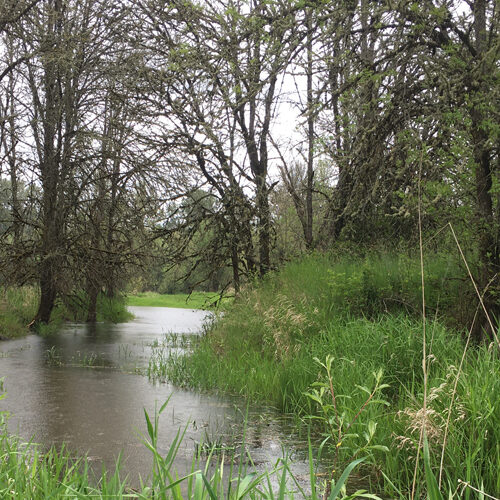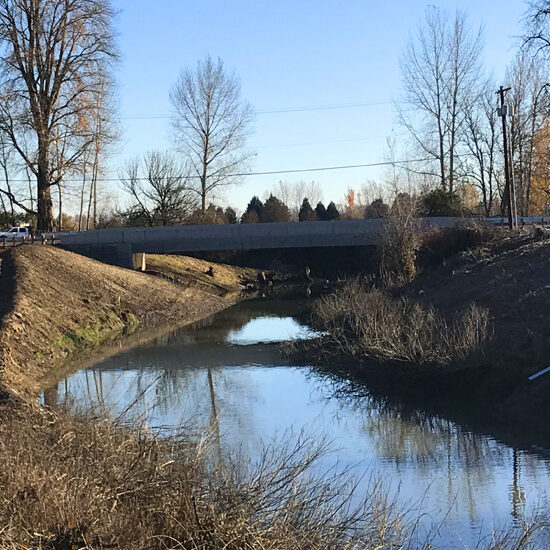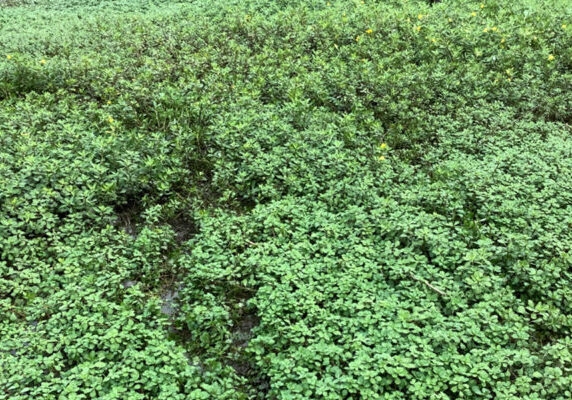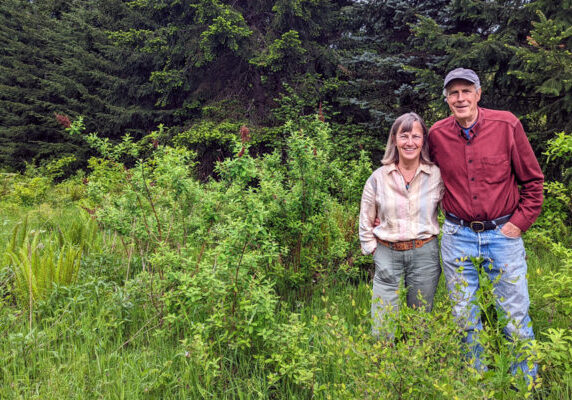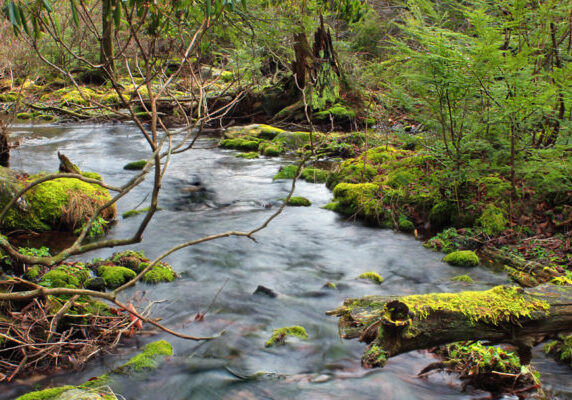Streams & Wetlands
Services
Riparian buffer benefits
Riparian buffers are a stretch of native vegetation adjacent to a stream or other water body. They provide many benefits for wildlife and people.
-
A healthy community of native riparian vegetation provides essential habitat for fish and other aquatic life as well as corridorsCorridors Wildlife corridor: a stretch of habitat that connects natural areas separated by human land use for wildlife movement.
-
Plants filter pollutants and lessen sediment in streams, providing cleaner water.
-
Riparian areas provide critical access to water, food, protection from predators, and nest sites for birds, amphibians, mammals, pollinators, and more.
-
Riparian plants capture and store carbon for long-term benefit, helping mitigate the impacts of climate change.
-
Streamside forests provide cool, shaded water for native fish and “nature’s air-conditioning” for people and wildlife.
Wetlands & ponds
Wetlands are an essential part of the landscape. They help protect water quality, control floodwaters, and provide habitat for a wide range of wildlife.
-
Wet meadows are increasingly rare and support uncommon native wildflowers, grasses, and pollinators.
-
Ponds provide wetland habitat and homes to amphibians and turtles, especially where other wetland areas no longer exist.
-
Wetland sites along the Willamette and Columbia Rivers provide habitat for a variety of salmon. Sloughs, lakes, floodplains, and marshes play a key role for young coho, Chinook, chum and steelhead. Juvenile salmon stop in these areas to feed and grow before heading out to the ocean. Wetland areas also provide safe resting spots for fish during fast moving floods.
What you can do
We can help:
503-238-4775
Find a specialist
Consider a conservation project along your stream.
-
Plant
Trees and shrubs help block noise and provide privacy and visual beauty.
-
Manage weeds
Self-maintaining native plants decrease the need to manage weeds.
-
Reduce erosion
Riparian vegetation helps keep stream or canal banks stable and reduces erosion. A network of diverse tree and shrub roots knit into the soil to hold it in place.
-
Reduce flooding
Flooding may be reduced with more native vegetation. Plants help with water infiltrationInfiltration Water absorbs into the ground instead of running over the surface
-
Save money & add value
Properties with native riparian buffers are eligible for reduced property taxes when enrolled with Multnomah County and typically have increased land values.
Staff contact
Kammy Kern-Korot
Senior Conservationist
Contact me about:
Oregon oak, savanna, wetlands and riparian habitats; Emerald ash borer; conservation planning and native plantings for pollinators and other wildlife on rural lands.Scott Gall
Farm & Soil Conservationist
Contact me about:
Soil health; Farms and livestock; Equity and inclusionLaura Taylor
Forest Conservationist
Contact me about:
Forest and woodland health; Wildfire risk in rural forests; Plants; Pollinators.Mary Logalbo
Urban Conservationist
Contact me about:
Urban services; Stormwater & erosion; Partner funding; School & community gardens; Plants; Equity and inclusion; Wildfire risk on urban forests; our Long Range Business Plan.
